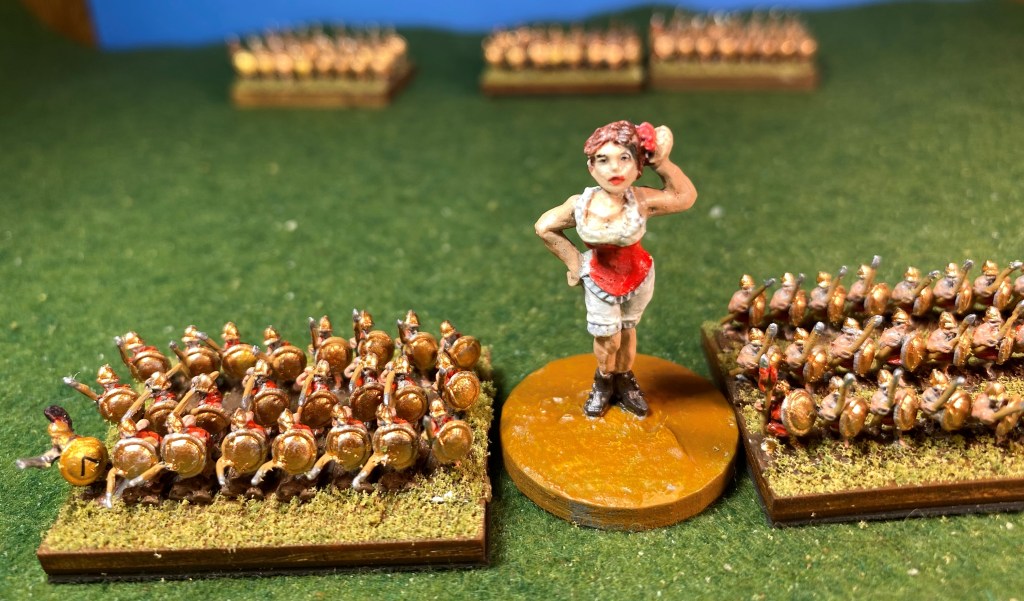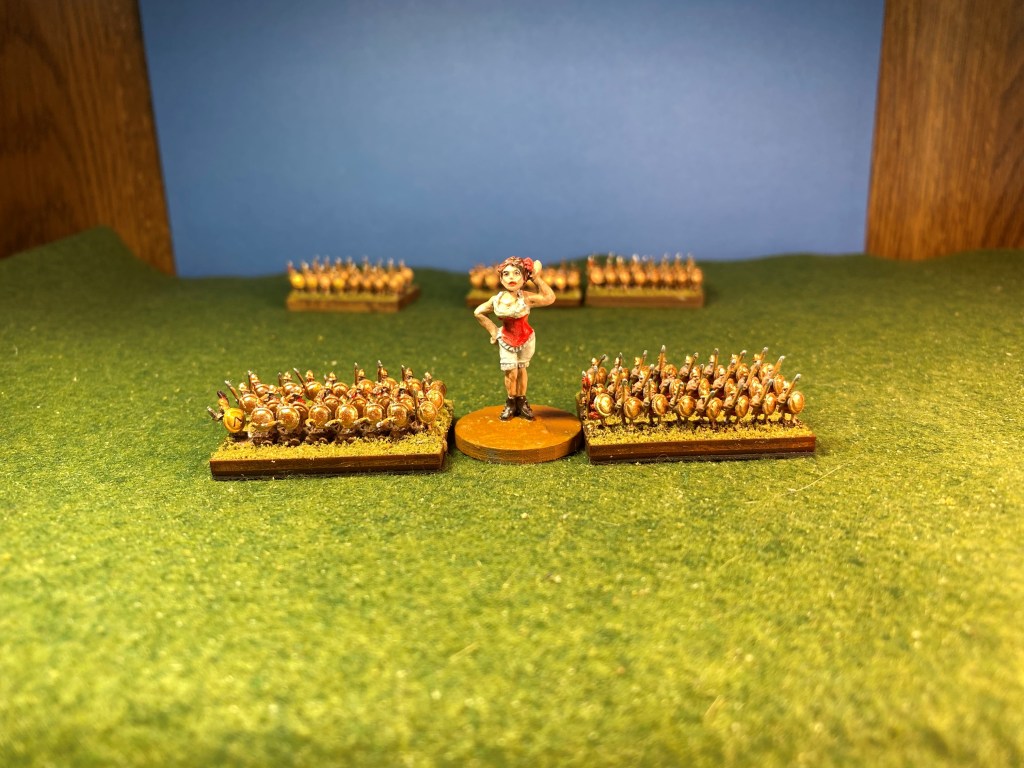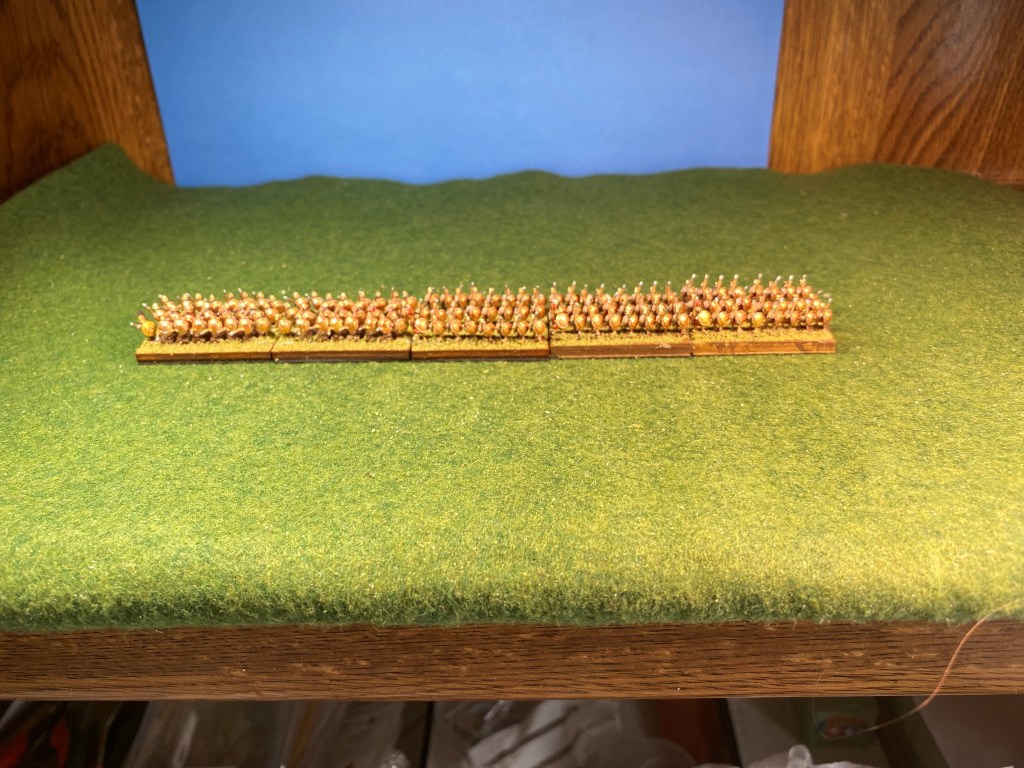Spartans
After languishing a couple of years in the paint queue, lead pile, or pile of shame, I’ve finished some 6mm Spartans. It’s 120 figures in 5 units of 24 figures each. The figures are from Baccus Miniatures.

I’ve painted them more uniform than they actually were. We’re finding that a lot of what wargamers think they know about Spartans, isn’t entirely correct. For instance, not all Spartans fought unarmored, not all shields had the “lambda” painted on them, and while their heavy infantry was among the best in the ancient world, Spartan cavalry and light infantry was among the worst.

Some years ago, I started a project to refight the First Battle of Mantinea in 418 B.C.E. It’s a significant battle in that it is the only land battle of the Peloponesian Wars where Spartan and Athenian troops actually fought one another. I started the project using 28mm figures, but soon realized I did not have a table large enough for the battle. So, I decided on 6mm figures.

Baccus sells unarmored Classical Greek hoplites in two packs. One pack has hoplites marching and the figures come on strips of four figures standing next to each other. The other pack has hoplites advancing, the figures are on strips of four figures standing behind one another. The pack of the marching figures is much easier to paint and base.

On the far left of the first stand is a figure from the Greek Generals pack. This figure represents King Agiss II of Sparta. In ancient armies, the position on the battlefield where a general had the most command and control over his army was the rightmost corner of the first rank. This position became known as the “position of honor.” Usually, the best troops were deployed in this part of the formation, and this tradition continued for centuries. In fact, one writer at the time blamed the Jacobite loss at Culloden on the initial deployment where the MacDonald regiments were removed from the position of honor and refused the initial orders to advance as a result. I don’t think this was the sole reason for their loss, so many other things went wrong for the Jacobite army that day.

Here is the obligatory photograph comparing 6mm figures with a 28mm figure. As a side note, it took just as long to paint 120 6mm figures as it did to paint the 28mm soiled dove.


In this photo, the camera is about 12 inches away from the figures.

And in this photo, the camera is about 2 feet away from the figures.
What are your thoughts on 6mm figures? I think they are great for massed battle games, especially when my playing surface is 4’x4′.